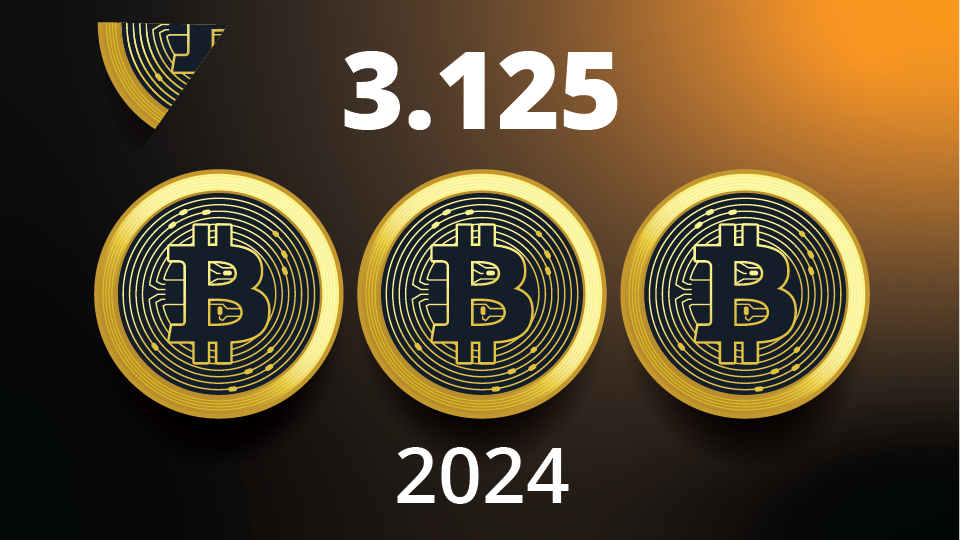What is Web3?
March 02, 2023
Read Time 4 MIN
The next generation of Internet technology, referred to as Web 3.0 or Web3, mainly utilizes machine learning, artificial intelligence (AI), and blockchain technology. Gavin Wood, the creator of Polkadot and an Ethereum co-founder, coined the phrase. Web3 provides consumers more autonomy over their online data, in contrast to Web2, which is focused on user-generated content hosted on centralized websites.
The objective of the movement is to develop open, interconnected, intelligent websites and online apps with better machine-based data understanding. Decentralization and digital economies are crucial components of Web3 because they allow us to assign value to online information. It's also important to realize that Web3 is a dynamic idea. No single definition exists, and its exact meaning can differ from person to person.
With the aid of AI and cutting-edge machine learning algorithms, Web3 seeks to deliver personalized and pertinent information more quickly. Machines will be able to grasp and recommend material intuitively as a result of improved search algorithms and advances in Big Data analytics. Additionally, Web3 will emphasize user-owned content and support for open digital markets.
Websites today typically present static data or user-generated content, such as forums or social media. This enables data to be sent widely, but it doesn't address the demands of particular consumers. A website should customize the information it offers to each user, much like the fluidity of interpersonal communication in the real world. With Web2, users no longer own or manage this information once it is online.
The creator of the World Wide Web and computer scientist Tim Berners-Lee are both significant figures in the Web3 movement. In 1999, he offered his vision of the future of the web:
“I have a dream for the Web [in which computers] become capable of analyzing all the data on the Web – the content, links, and transactions between people and computers. A "Semantic Web," which makes this possible, has yet to emerge, but when it does, the day-to-day mechanisms of trade, bureaucracy, and our daily lives will be handled by machines talking to machines.”
Since then, Gavin Wood's message and Berners-Lee’s vision have come together. Here, websites and applications will have access to a vast ocean of decentralized information. When working with specific users, they will comprehend and effectively utilize that data.
Technology, like the Internet, is always changing and innovating. We have already encountered Web1 and 2, and much discussion surrounds Web3. Users of Web1 received a static experience because they were unable to build modern, content-rich websites. Social media and dynamic websites from Web2 brought us closer together, but at the expense of centralization.
Web3 aims to offer control over the content we access online and to build a semantic web. This implies that computers will have no trouble processing and reading user-generated content. Blockchain will give rise to decentralization, open digital economies, and free digital identities with cryptocurrency wallets.
The availability of 3D alternatives to regular web browsing will change how we connect with the internet. Additionally, advantages to the consumer include effective browsing, pertinent advertising, and enhanced customer service. Virtual assistants driven by AI, like Siri and Alexa, as well as interconnected smart homes could also be part of the broad development of Web2 to Web3.
Web3 Use Cases
No Single Point of Control
Since middlemen are no longer involved, user data is no longer under their control. Due to this freedom, there is a lower chance of being subject to corporate or governmental censorship, and cyber-attacks like denial-of-service are less successful.
Increased Interconnectedness of Information
As more items are linked to the Internet, greater data sets provide algorithms with more information to examine. By doing so, they may be able to provide users with information that is more accurate and meets their individual needs.
More Effective Browsing
Choosing the best results from search engines can be difficult. Nevertheless, they have improved over time in locating semantically pertinent items based on search context and metadata. This results in a more convenient web browsing experience that can help anyone find the exact information they need with ease.
Improved Marketing and Advertising
No one enjoys being inundated with web advertisements. However, if the advertisements are helpful rather than annoying, it may be because they are pertinent to your requirements. By utilizing AI systems that are smarter and targeting certain audiences based on consumer data, Web3 seeks to improve advertising.
Better Customer Service
Websites and web applications must provide excellent customer service to ensure a positive user experience. However, many successful web services find it difficult to scale their customer support operations because of the prohibitive prices. Users can benefit from an improved experience when interacting with support professionals thanks to more sophisticated chatbots that can speak to several consumers at once.
| Web1 | Web2 | Web3 | |
| Content | Passive interaction for the user | Community platforms and user-generated content | User-ownership for content creators |
| Technologies | HTML | Dynamic HTML, Javascript | Blockchain, AI, machine learning |
| Virtual environments | None | Some basic 3D use | 3D, VR, AR |
| Advertising | Obtrusive (banners, etc.) | Interactive | Targeted based on user behavior |
| Data storage | Stored on individual websites’ servers | Owned by large tech giants | Distributed across users |
| Audience | Individual users | Specific communities of users | Interconnected users across multiple platforms and devices |
How Do You Invest in Web3?
At its core, Web3 is driven by artificial intelligence, blockchain, distributed ledgers, and 3D/VR/AR environments. One of the best ways to gain exposure to the development of Web3 is to invest in the underlying technologies that make it possible in the first place. On the blockchain side, that means gaining exposure to smart contract platforms such as Ethereum. VanEck provides a straightforward, diversified and easy way to invest in a broad selection of smart contract platforms that enable Web3.
To receive more Digital Assets insights, sign up in our subscription center.
Related Topics
Related Insights
DISCLOSURES
Definitions
Bitcoin (BTC) is a decentralized digital currency, without a central bank or single administrator, that can be sent from user to user on the peer-to-peer bitcoin network without the need for intermediaries. Beta of rig price is a measure of the price volatility of a mining rig compared to Bitcoin’s price.
Ethereum is a decentralized, open-source blockchain with smart contract functionality. Ether is the native cryptocurrency of the platform. Amongst cryptocurrencies, Ether is second only to Bitcoin in market capitalization.
Polkadot is a sharded heterogeneous multi–chain architecture which enables external networks as well as customized layer one “parachains” to communicate, creating an interconnected internet of blockchains.
Please note that VanEck may offer investments products that invest in the asset class(es) or industries included in this communication.
This is not an offer to buy or sell, or a solicitation of any offer to buy or sell any of the cryptocurrencies mentioned herein. The information presented does not involve the rendering of personalized investment, financial, legal, or tax advice. Certain statements contained herein may constitute projections, forecasts and other forward looking statements, which do not reflect actual results. Information provided by third-party sources are believed to be reliable and have not been independently verified for accuracy or completeness and cannot be guaranteed. Any opinions, projections, forecasts, and forward-looking statements presented herein are valid as of the date of this communication and are subject to change without notice. The information herein represents the opinion of the author(s), but not necessarily those of VanEck or its employees.
Cryptocurrency is a digital representation of value that functions as a medium of exchange, a unit of account, or a store of value, but it does not have legal tender status. Cryptocurrencies are sometimes exchanged for U.S. dollars or other currencies around the world, but they are not generally backed or supported by any government or central bank. Their value is completely derived by market forces of supply and demand, and they are more volatile than traditional currencies. The value of cryptocurrency may be derived from the continued willingness of market participants to exchange fiat currency for cryptocurrency, which may result in the potential for permanent and total loss of value of a particular cryptocurrency should the market for that cryptocurrency disappear. Cryptocurrencies are not covered by either FDIC or SIPC insurance. Legislative and regulatory changes or actions at the state, federal, or international level may adversely affect the use, transfer, exchange, and value of cryptocurrency.
Investing in cryptocurrencies comes with a number of risks, including volatile market price swings or flash crashes, market manipulation, and cybersecurity risks. In addition, cryptocurrency markets and exchanges are not regulated with the same controls or customer protections available in equity, option, futures, or foreign exchange investing. There is no assurance that a person who accepts a cryptocurrency as payment today will continue to do so in the future.
Investors should conduct extensive research into the legitimacy of each individual cryptocurrency, including its platform, before investing. The features, functions, characteristics, operation, use and other properties of the specific cryptocurrency may be complex, technical, or difficult to understand or evaluate. The cryptocurrency may be vulnerable to attacks on the security, integrity or operation, including attacks using computing power sufficient to overwhelm the normal operation of the cryptocurrency’s blockchain or other underlying technology. Some cryptocurrency transactions will be deemed to be made when recorded on a public ledger, which is not necessarily the date or time that a transaction may have been initiated.
Investors must have the financial ability, sophistication and willingness to bear the risks of an investment and a potential total loss of their entire investment in cryptocurrency.
- An investment in cryptocurrency is not suitable or desirable for all investors.
- Cryptocurrency has limited operating history or performance.
- Fees and expenses associated with a cryptocurrency investment may be substantial.
There may be risks posed by the lack of regulation for cryptocurrencies and any future regulatory developments could affect the viability and expansion of the use of cryptocurrencies. Investors should conduct extensive research before investing in cryptocurrencies.
Information provided by Van Eck is not intended to be, nor should it be construed as financial, tax or legal advice. It is not a recommendation to buy or sell an interest in cryptocurrencies.
All investing is subject to risk, including the possible loss of the money you invest. As with any investment strategy, there is no guarantee that investment objectives will be met and investors may lose money. Diversification does not ensure a profit or protect against a loss in a declining market. Past performance is no guarantee of future performance.
© 2023 Van Eck Securities Corporation, Distributor, a wholly owned subsidiary of Van Eck Associates Corporation.
Related Funds
DISCLOSURES
Definitions
Bitcoin (BTC) is a decentralized digital currency, without a central bank or single administrator, that can be sent from user to user on the peer-to-peer bitcoin network without the need for intermediaries. Beta of rig price is a measure of the price volatility of a mining rig compared to Bitcoin’s price.
Ethereum is a decentralized, open-source blockchain with smart contract functionality. Ether is the native cryptocurrency of the platform. Amongst cryptocurrencies, Ether is second only to Bitcoin in market capitalization.
Polkadot is a sharded heterogeneous multi–chain architecture which enables external networks as well as customized layer one “parachains” to communicate, creating an interconnected internet of blockchains.
Please note that VanEck may offer investments products that invest in the asset class(es) or industries included in this communication.
This is not an offer to buy or sell, or a solicitation of any offer to buy or sell any of the cryptocurrencies mentioned herein. The information presented does not involve the rendering of personalized investment, financial, legal, or tax advice. Certain statements contained herein may constitute projections, forecasts and other forward looking statements, which do not reflect actual results. Information provided by third-party sources are believed to be reliable and have not been independently verified for accuracy or completeness and cannot be guaranteed. Any opinions, projections, forecasts, and forward-looking statements presented herein are valid as of the date of this communication and are subject to change without notice. The information herein represents the opinion of the author(s), but not necessarily those of VanEck or its employees.
Cryptocurrency is a digital representation of value that functions as a medium of exchange, a unit of account, or a store of value, but it does not have legal tender status. Cryptocurrencies are sometimes exchanged for U.S. dollars or other currencies around the world, but they are not generally backed or supported by any government or central bank. Their value is completely derived by market forces of supply and demand, and they are more volatile than traditional currencies. The value of cryptocurrency may be derived from the continued willingness of market participants to exchange fiat currency for cryptocurrency, which may result in the potential for permanent and total loss of value of a particular cryptocurrency should the market for that cryptocurrency disappear. Cryptocurrencies are not covered by either FDIC or SIPC insurance. Legislative and regulatory changes or actions at the state, federal, or international level may adversely affect the use, transfer, exchange, and value of cryptocurrency.
Investing in cryptocurrencies comes with a number of risks, including volatile market price swings or flash crashes, market manipulation, and cybersecurity risks. In addition, cryptocurrency markets and exchanges are not regulated with the same controls or customer protections available in equity, option, futures, or foreign exchange investing. There is no assurance that a person who accepts a cryptocurrency as payment today will continue to do so in the future.
Investors should conduct extensive research into the legitimacy of each individual cryptocurrency, including its platform, before investing. The features, functions, characteristics, operation, use and other properties of the specific cryptocurrency may be complex, technical, or difficult to understand or evaluate. The cryptocurrency may be vulnerable to attacks on the security, integrity or operation, including attacks using computing power sufficient to overwhelm the normal operation of the cryptocurrency’s blockchain or other underlying technology. Some cryptocurrency transactions will be deemed to be made when recorded on a public ledger, which is not necessarily the date or time that a transaction may have been initiated.
Investors must have the financial ability, sophistication and willingness to bear the risks of an investment and a potential total loss of their entire investment in cryptocurrency.
- An investment in cryptocurrency is not suitable or desirable for all investors.
- Cryptocurrency has limited operating history or performance.
- Fees and expenses associated with a cryptocurrency investment may be substantial.
There may be risks posed by the lack of regulation for cryptocurrencies and any future regulatory developments could affect the viability and expansion of the use of cryptocurrencies. Investors should conduct extensive research before investing in cryptocurrencies.
Information provided by Van Eck is not intended to be, nor should it be construed as financial, tax or legal advice. It is not a recommendation to buy or sell an interest in cryptocurrencies.
All investing is subject to risk, including the possible loss of the money you invest. As with any investment strategy, there is no guarantee that investment objectives will be met and investors may lose money. Diversification does not ensure a profit or protect against a loss in a declining market. Past performance is no guarantee of future performance.
© 2023 Van Eck Securities Corporation, Distributor, a wholly owned subsidiary of Van Eck Associates Corporation.




